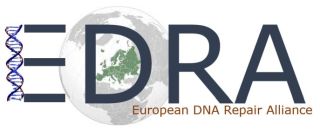|
|
|
Previous webinars > 15th EDRA Webinar - March 25th, 202515th EDRA Webinar - March 25th, 2025, from 4:00 to 5:30 pm (CET)
Prof. Fredrik Westerlund - Keynote speaker Chalmers University of Technology, Gothenburg, Sweden Nanofluidic tools to study DNA damage and repair My group has a strong focus in single DNA molecule analysis. Our main workhorse is the use of nanofluidic channels to stretch single DNA molecules and image them using fluorescence microscopy. The channels are on the order of 100x100 nm2, which is so narrow that large single DNA molecules need to stretch to accommodate. Importantly, this means that we can image any long DNA molecules without doing any chemistry to their ends. This means, among other things, that we can stretch any DNA, such as DNA isolated from cells, and that we can study reactions occurring on DNA ends. We use the nanofluidic platform in several different research projects ranging from fundamental research to applications in diagnostics. One area of research is optical DNA mapping (ODM), a research field where sequence information is obtained from DNA on length scales that are hard to investigate with traditional methods like sequencing on one hand and FISH on the other. The method is based on labelling DNA with sequence specific probes and imaging DNA molecules that are 100-1000 kb long. We have used this method for bacterial plasmids1, for typing bacteria2 and for the human genome3. We collaborate with clinicians to apply this methodology in both infectious diseases and cancer. I will also demonstrate how ODM can be combined with enzymatic labeling to locate DNA damage along the human genome. We are also interested in fundamental research on DNA-protein interactions. We in particular take advantage of the fact the ends of long DNA are free and hence that we can study reactions on those ends. DNA ends are particularly important in repair of DNA double strand breaks (DSB), one of the most toxic DNA damages that can occur on DNA. We have reported the first single molecule study on non-homologous end-joining in bacteria4 and also studied the human protein CtIP and its role in repair of DSBs in human cells5.
1.Bikkarolla, S. K. et al. mBio 10, 168–12 (2019). 2.Müller, V. et al. ACS Infectious Diseases 6, 1076–1084 (2020). 3.Müller, V. et al. Nucleic Acids Research 24, 690–9 (2019). 4.Öz, R. et al. Nucleic Acids Res 49, 2629–2641 (2021). 5.Öz, R. et al. Proc. Nat. Acad. Sci. U. S. A. 117, 21403–21412 (2020).
Sidrit Uruci - short talk - Erasmus University Medical Center, Erasmus MC Cancer Institute, Rotterdam, The Netherlands
- Leiden University Medical Center (LUMC), Leiden, The Netherlands
SMARCAD1 regulates R-loops at active replication forks linked to cancer mutation hotspots DNA replication forks often encounter obstacles during their progression such as the stalled transcription machinery and R-loops. While ribonucleases and DNA-RNA helicases can resolve these structures, the role of chromatin remodelers remains understudied. In this study, we describe an additional and independent role for chromatin remodeler SMARCAD1 in processing R-loops in proximity of active replication forks. Through a series of in vitro biochemical assays, single molecule atomic force microscopy and in silico predictions through AlphaFold3 software, we demonstrate that SMARCAD1 directly binds to R-loops through its ATPase domain. Utilizing functional mutants of human SMARCAD1, which either lacks the association to the replication forks (NΔ-SMARCAD1) or is defective in its nucleosome remodeling activity (K528R-SMARCAD1) for in situ artificial tethering and in vivo genetic studies, we captured high levels of transcription-replication conflicts (TRCs) and R-loops accumulation in the vicinity of ongoing and unstressed replication forks. The regions accumulating R-loops in SMARCAD1-mutant cell lines are distinct from those previously identified as prone to replication fork breakage. Additionally, regions with R-loop accumulation in SMARCAD1 mutant cells exhibit increased mutagenesis specifically in germline tumors, suggesting they are mutation hotspots in cancer. Our study unveils SMARCAD1 as an autonomous chromatin remodeler capable of directly binding the R-loops, thus facilitating their processing, and TRCs ahead of replication forks, emerging as a key player in maintaining genome stability and preventing tumorigenesis.
Agnese Cristini - short talk Cancer Research Center CRCT, Toulouse, France R-loop dysregulation in cancer R-loops are alternative nucleic acid structures comprising an RNA/DNA hybrid and a displaced single-stranded DNA, which form during transcription in both cycling and non-cycling cells. While R-loops play key physiological roles, their dysregulation can lead to altered gene expression and transcription-associated genome instability and has been associated with neurological diseases and cancer. Therefore, maintaining R-loop homeostasis is crucial and is achieved by the action of multiple cellular factors. Our research aims to elucidate the molecular mechanisms connecting R-loop dysregulation, R-loop-regulating factors and R-loop-associated genome instability to oncogenesis and cancer progression in response to anticancer therapies. These findings may have potential implications for preventing cancer onset and improving the efficacy of current anticancer treatments.
|



